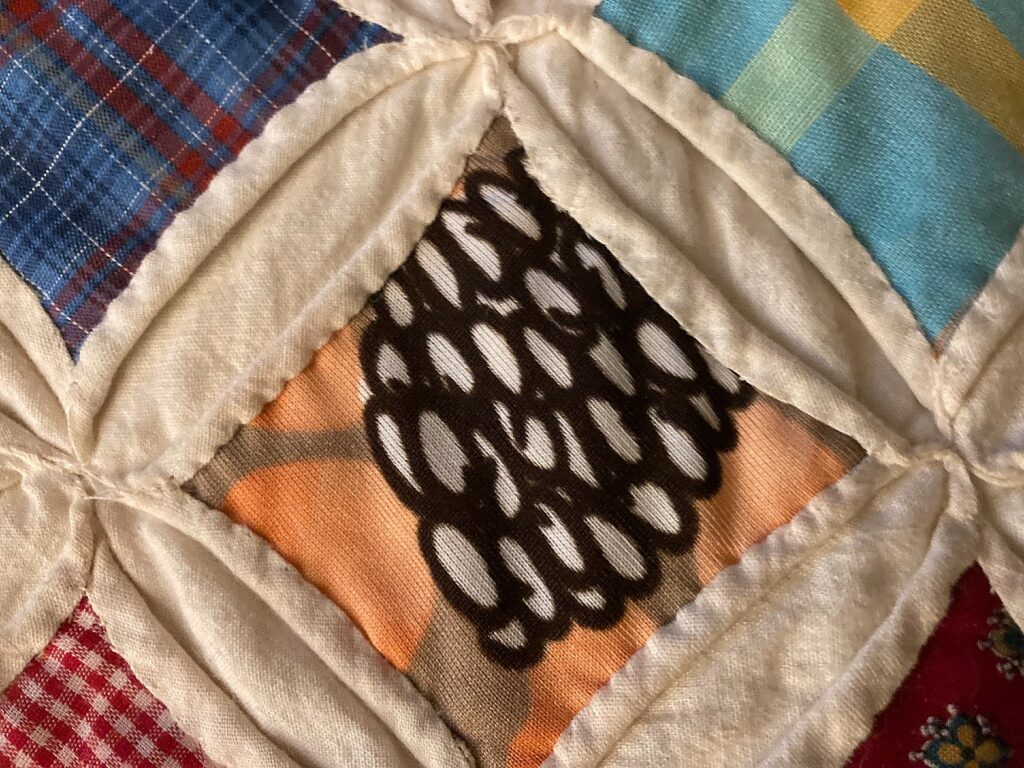By Elliott Brack
Editor and Publisher, GwinnettForum
FEB. 13, 2024 | It was a reminder of times past. Two incidents last week were about quilting.
![]() GwinnettForum reported Duluth quilters are sending their handiwork to Ukraine, and are being featured this week at the Millenium Museum in Atlantic Station.
GwinnettForum reported Duluth quilters are sending their handiwork to Ukraine, and are being featured this week at the Millenium Museum in Atlantic Station.
And for a few nights recently, when visiting our daughter in Durham, N.C., I slept under a quilt that my Mother had made for her granddaughter. It was a beautiful hand-stitched quilt, made painstakingly on a quilting frame. (How many of you have ever heard of a quilting frame, or can visualize it?)
Actually, since the weather had turned cold in North Carolina, I slept not only under that quilt my mother made, but under another quilt, plus a blanket, in a relatively cooler room that I have not been used to. But I was cozy warm under the weight of these covers.
Quilting today is a fading art. Though I know some ladies who quilt, today most do it as a hobby. And they are helped by several modern implements, the sewing machine, as well as other means, including the Internet. Who would have known?
Yet the quilting of yesterday was very much not a hobby. It was a means of preparing for the cooler months by hand-stitching quilts, some more functional than beautiful, all purely to keep family members snug under their covers .
Often housewives would be quilting after the evening meal, coming off working hard during the day with the washing and ironing, preparing meals, or even toiling in the fields. Sitting down amidst the awkward quilting frame was also restful, compared to a housewife’s other chores. Often family members or neighbors gathered in community “Quilting circles.” It was enjoyable, besides being most utilitarian for the coming cold weather. And quilting is a quiet job, allowing the quilters to talk among themselves, sometimes even swapping gossip!
But it was slow work. It began by getting the homemade quilting frame set up. The frame was made up of four wooden strips, about two inches wide, and 6-7 feet long. This was held together with clamps on the four corners. Cloth, which would be the eventual size of the quilt, was attached one side of the frame, then one end was rolled up to allow a small, wide space of the cloth for the quilter to work. As the quilter made progress, the finished stitched area was rolled to the other edge of the frame, and a new section of the cloth was let out for quilting.
One reason it took several quilts in the South to stay warm in bed during winter was that people in the South didn’t routinely have woolen fabric to use to make quilts. They used cotton cloth. Once the quilt pattern was finished, then pure cotton was stuffed between the top and bottom layers, then more hand stitching was made to hold the two levels of fabric closely together.
Essentially, it was a slow process, made even slower by the fact that the housewife just didn’t work continuously on it, because of her other duties. One more element: those working on quilts were justifiably proud of their creation. Many were beautiful in their design.
Old-time quilting was essentially folk art, though few thought of it as art. It was in a far different time from the way people sleep with modern bed covers today.
- Have a comment? Send to: elliott@brack.net











Follow Us